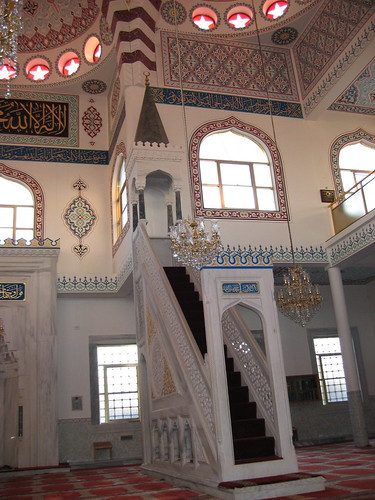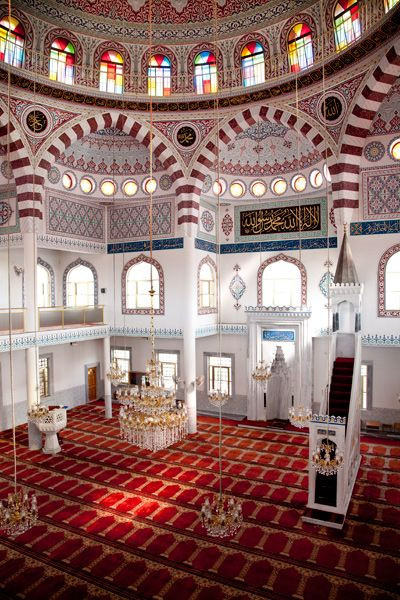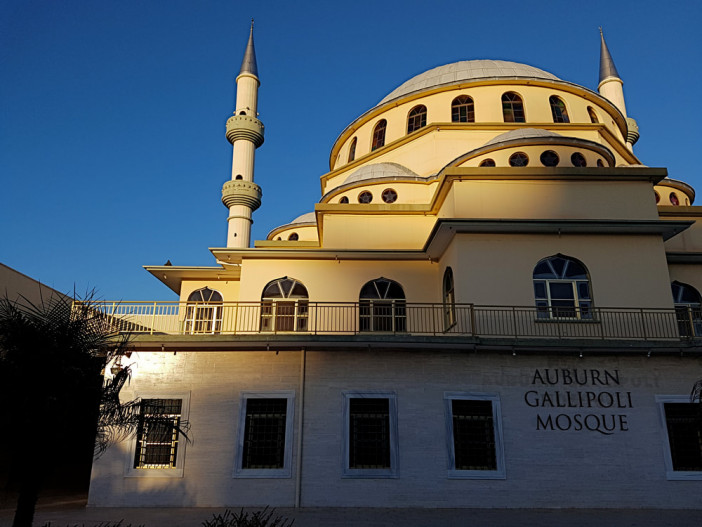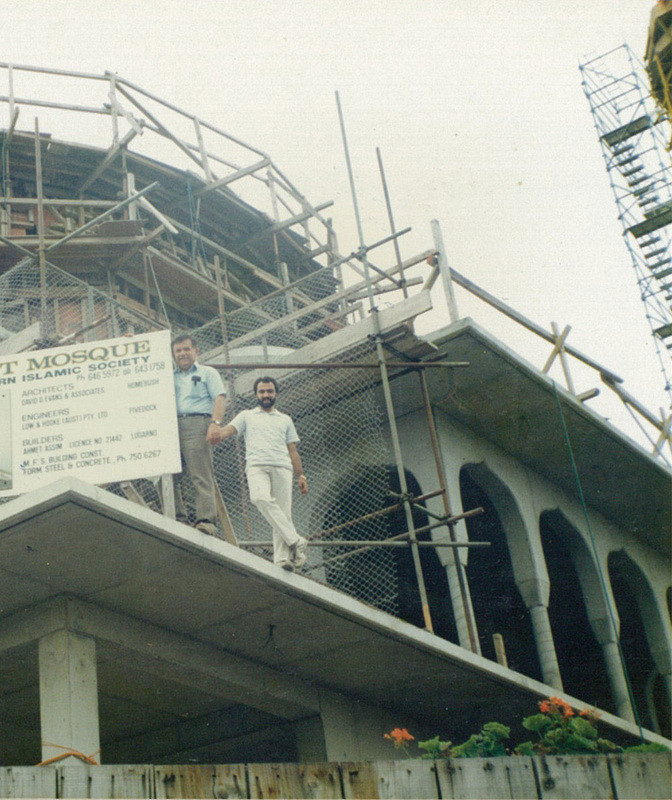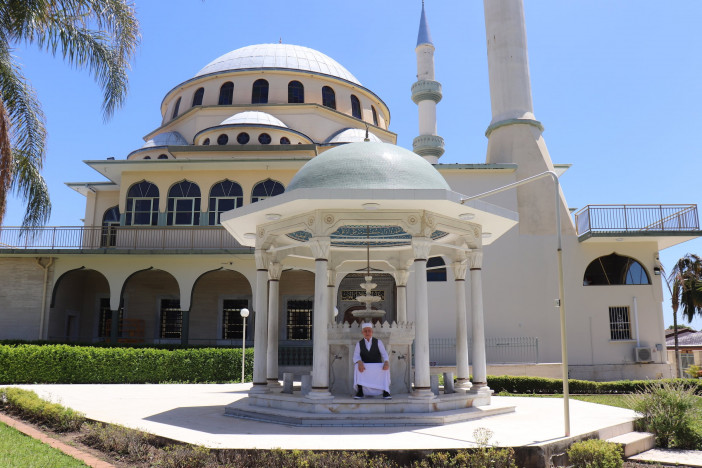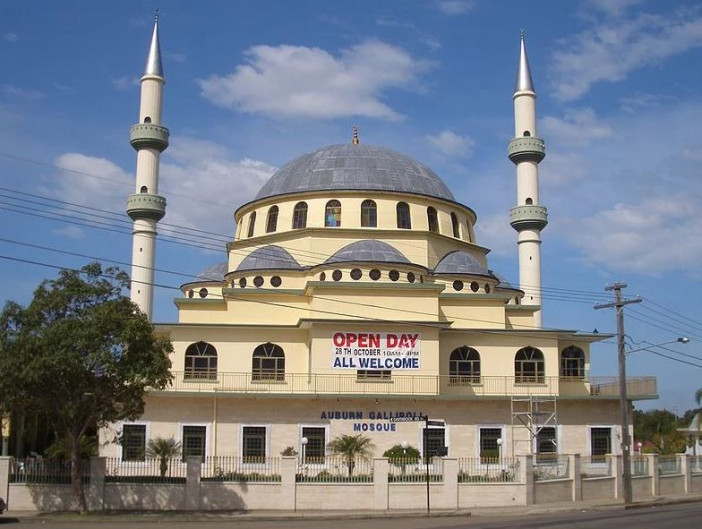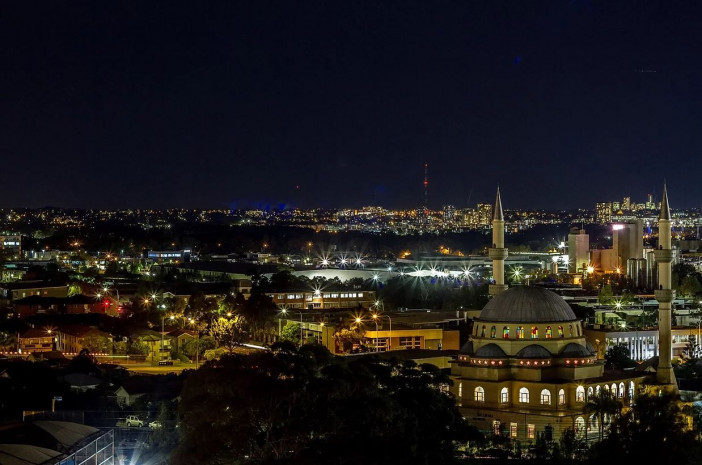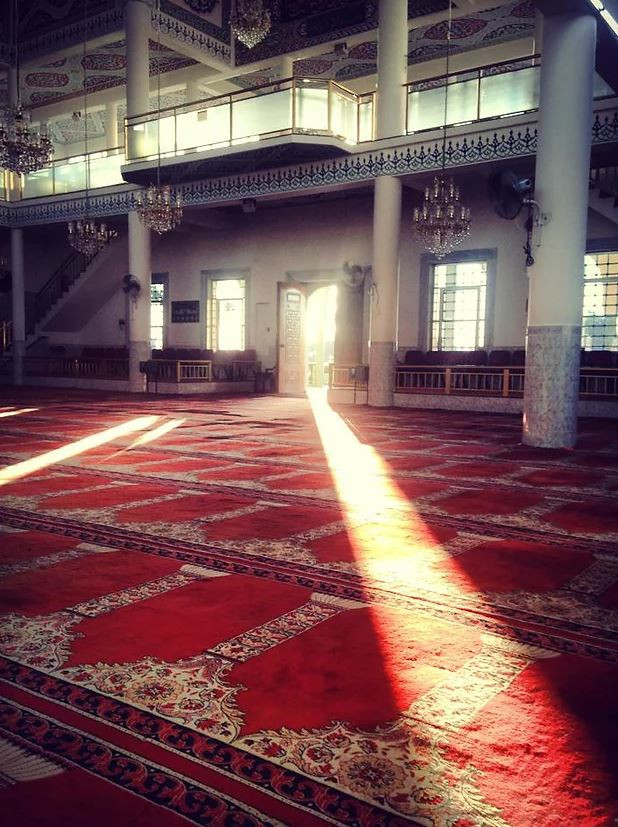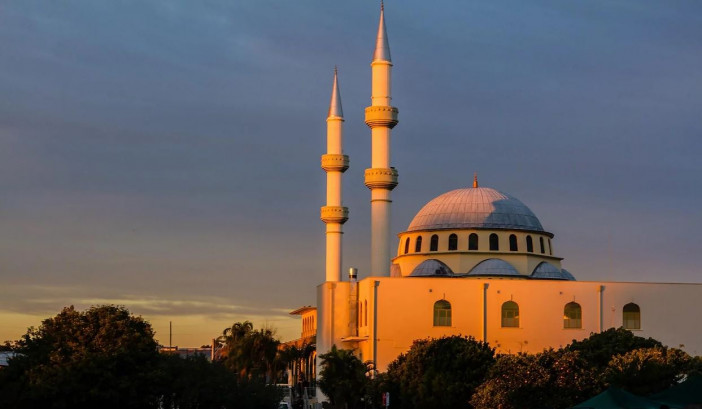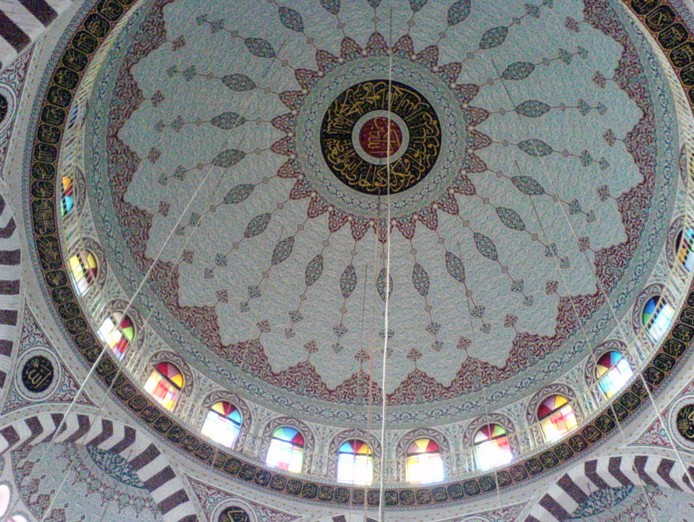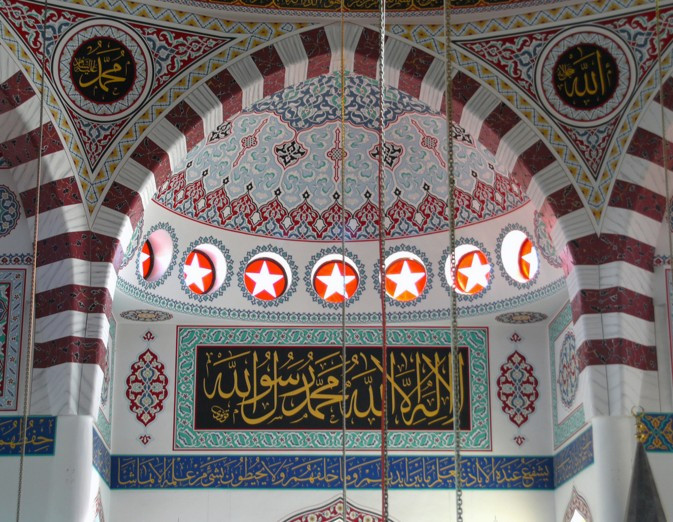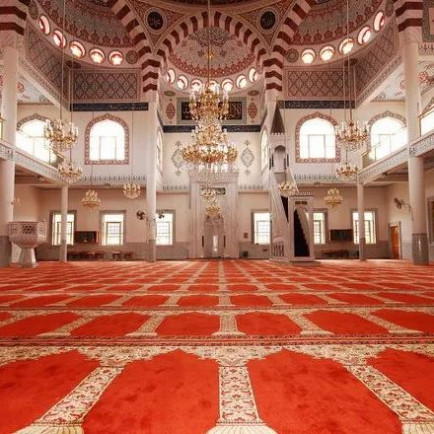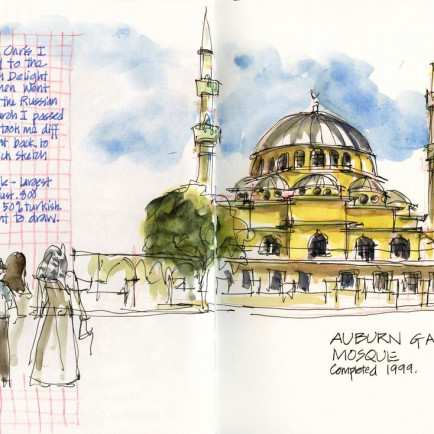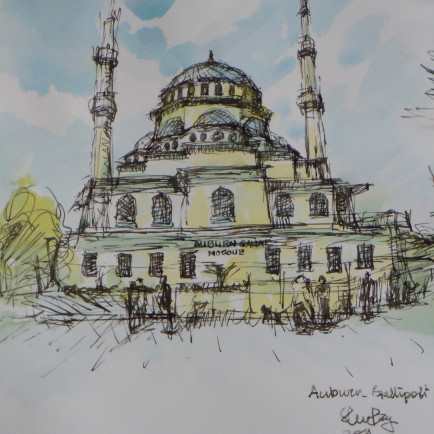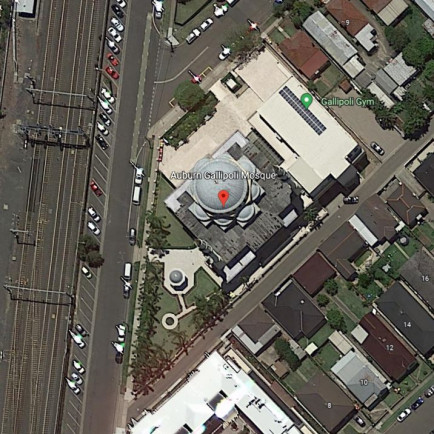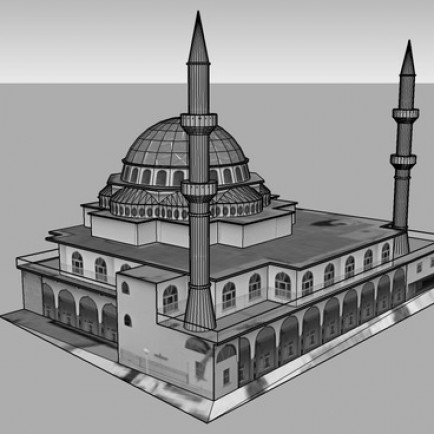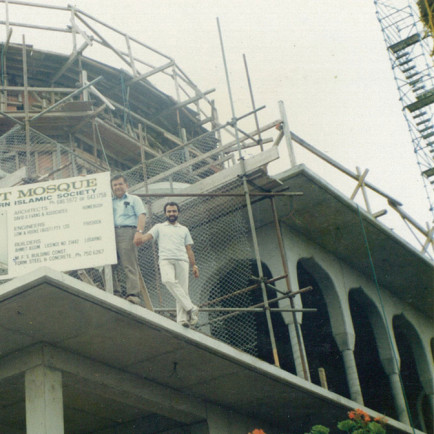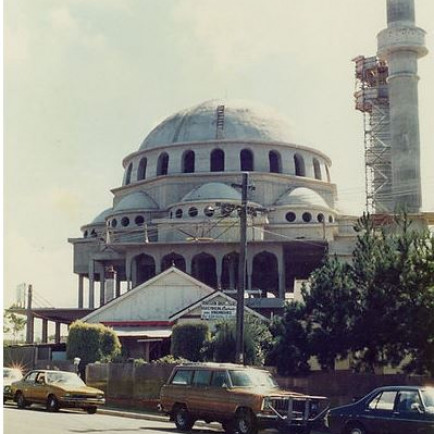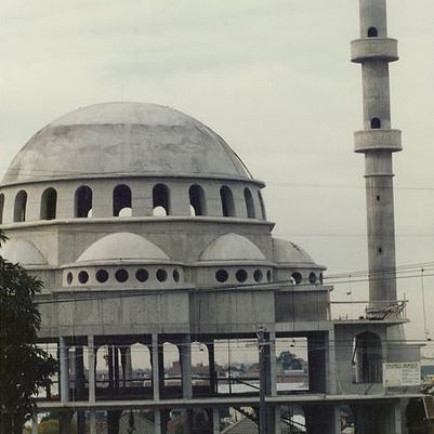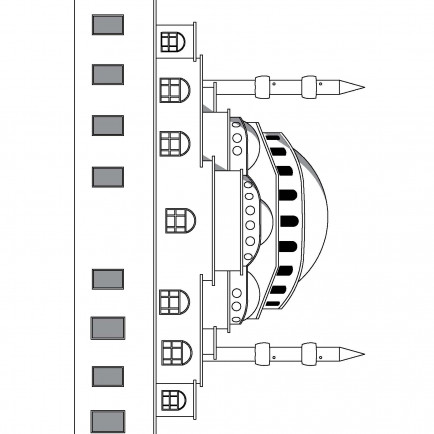Auburn Gallipoli Mosque
History
The first mosque on the present mosque site was opened for worship on the 3rd of November 1979. It was a house which had the internal walls removed to generate an open space environment. The construction of the present mosque structure began in 1986. The Mosque's construction was completed and officially opened on 28th of November 1999, twenty years after the initial opening. The current building took a painstaking 13 years to complete. The construction time was restrained due to a lack of funds and the time required to raise funds through donations. The project was initiated and largely funded by the Turkish community. The total cost of the project is about six million dollars. Many other local Muslim members irrespective of their ethnic background have greatly contributed to the costs attributed to the building of the mosque. The present congregation is approximately 50% Turkish and the remaining 50% is made up of Muslims from diverse ethnic backgrounds. The site, above which the mosque stands, has a total area of 1 acre or 4,000 square meters.
Urban and Architectural
The mosque was designed based on the Classical Ottoman construct characterised by a central dome and minarets. The builder for the mosque was Ahmet Asim who donated much of his time. The name of the mosque - Auburn Gallipoli Mosque - reflects the shared legacy of the Australian society and the main community behind the construction of the mosque, the Australian Turkish Muslim Community.
The Auburn Gallipoli Mosque has an area of 4,000 sq m built as a concrete frame with infill masonry exterior walls lined with travertine stone imported from Turkey. The mosque is square in floor layout roofed with of two tiers of domes with a large central dome surrounded by eight smaller semi domes flanked by two minarets. The main dome has an internal circumference of 16.6m elevated 22.6m above the finished floor. The minarets stand a total of 34m high each with two tiers of external balconies. The main dome rests on eight perimeter columns transferring the load equilaterally to the surrounding eight semi domes then onto the perimeter walls.
Immediately below each dome are a series of equally spaced windows glazed with coloured glass, lighting the open plan below. The windows provide filtered daylight onto the walls and floors lined with mosaics.
Similarly the dome was clad with copper in lieu of the traditional practice of lead which provides a dark deep bluish gray patina that complements the use of stone on the exterior walls of the main mosque. In 2006, the committee commissioned a team of roof specialist from Turkey to reline the dome with lead.
The majority of the finishes and fixtures were imported from Turkey and/or designed by Turkish artisans. Marble and travertine stone were used on the external walls. The carpet designed in Istanbul detailed marking the congregational prayer formation. The crystal chandeliers and entrance doors were designed and manufactured in Turkey employing traditional hand-crafted timber work of the Ottoman Style. The internal decorations and calligraphy found on the walls and internal ceiling of the dome were designed by Turkish calligraphy artist Huseyin Oksuz and painted by 5 Turkish artists over a period of six months
The Mosque is designed to facilitate a spiritual and serene atmosphere with architectural features conforming to Islamic daily congregational prayers. The main entrance is located at the rear with two other entry doors on each side directing worshipers through the internal space.
The mihrab is a niche inserted into the wall where the Imam (prayer leader) stands to lead the prayer service, and a platform for Friday prayer sermons. The niche is detailed with intricate carved marble work of mimbar which orients worshippers towards Mecca.
Description
The Auburn Gallipoli Mosque is an Ottoman-style mosque in Auburn, a suburb of Sydney, New South Wales, Australia. More than 500 worshippers attend every day and around 2,000 worshippers attend the weekly special Friday prayer at the Auburn Gallipoli Mosque, which is primarily used by Turkish Australians.
The mosque's name invokes the legacy of the Gallipoli Campaign during World War I, which played a pivotal role in the history of both Australia and the Republic of Turkey. According to mosque officials, the name is meant to signify "the shared legacy of the Australian society and the main community behind the construction of the mosque, the Australian Turkish Muslim Community." The Auburn Gallipoli Mosque is based on the design of the Marmara University Faculty of Theology mosque in Istanbul, Turkey.
The first mosque on the present mosque site was opened for worship on 3 November 1979. It was a house with internal walls removed to generate open space. The construction of the present mosque structure began in 1986. Its construction and external finishes were completed and officially opened on 28 November 1999, twenty years after the first opening.
On the 10th of December 2005, during an official visit to Australia, Turkish President Erdogan, who was prime Minister at the time, attended the Friday sermon and prayerd among worshippers.
References
https://www.gallipolimosque.org.au/mosque
"History of the Auburn Gallipoli Mosque"Auburn Gallipoli Mosque. Archived from the original on 16 February 2011. Retrieved 27 March 2012.
Tovey, Josephine (24 April 2010). "Turkish mosque joins honour roll of Australian heritage buildings". The Sydney Morning Herald. Retrieved 13 July 2011.
"Auburn Gallipoli Mosque". Initiative NSW. National Trust of Australia. Retrieved 18 February 2019.
Details
Location
15-19 Gelibolu Pde, Sydney, New South Wales 2144
Worshippers
1600
Owners
Australian Turkish Muslim Community / Ahmet Asim
Architect Name
Year of Build
1979
Area
1,000 m²
Drawings
Map
History
The first mosque on the present mosque site was opened for worship on the 3rd of November 1979. It was a house which had the internal walls removed to generate an open space environment. The construction of the present mosque structure began in 1986. The Mosque's construction was completed and officially opened on 28th of November 1999, twenty years after the initial opening. The current building took a painstaking 13 years to complete. The construction time was restrained due to a lack of funds and the time required to raise funds through donations. The project was initiated and largely funded by the Turkish community. The total cost of the project is about six million dollars. Many other local Muslim members irrespective of their ethnic background have greatly contributed to the costs attributed to the building of the mosque. The present congregation is approximately 50% Turkish and the remaining 50% is made up of Muslims from diverse ethnic backgrounds. The site, above which the mosque stands, has a total area of 1 acre or 4,000 square meters.
Urban and Architectural
The mosque was designed based on the Classical Ottoman construct characterised by a central dome and minarets. The builder for the mosque was Ahmet Asim who donated much of his time. The name of the mosque - Auburn Gallipoli Mosque - reflects the shared legacy of the Australian society and the main community behind the construction of the mosque, the Australian Turkish Muslim Community.
The Auburn Gallipoli Mosque has an area of 4,000 sq m built as a concrete frame with infill masonry exterior walls lined with travertine stone imported from Turkey. The mosque is square in floor layout roofed with of two tiers of domes with a large central dome surrounded by eight smaller semi domes flanked by two minarets. The main dome has an internal circumference of 16.6m elevated 22.6m above the finished floor. The minarets stand a total of 34m high each with two tiers of external balconies. The main dome rests on eight perimeter columns transferring the load equilaterally to the surrounding eight semi domes then onto the perimeter walls.
Immediately below each dome are a series of equally spaced windows glazed with coloured glass, lighting the open plan below. The windows provide filtered daylight onto the walls and floors lined with mosaics.
Similarly the dome was clad with copper in lieu of the traditional practice of lead which provides a dark deep bluish gray patina that complements the use of stone on the exterior walls of the main mosque. In 2006, the committee commissioned a team of roof specialist from Turkey to reline the dome with lead.
The majority of the finishes and fixtures were imported from Turkey and/or designed by Turkish artisans. Marble and travertine stone were used on the external walls. The carpet designed in Istanbul detailed marking the congregational prayer formation. The crystal chandeliers and entrance doors were designed and manufactured in Turkey employing traditional hand-crafted timber work of the Ottoman Style. The internal decorations and calligraphy found on the walls and internal ceiling of the dome were designed by Turkish calligraphy artist Huseyin Oksuz and painted by 5 Turkish artists over a period of six months
The Mosque is designed to facilitate a spiritual and serene atmosphere with architectural features conforming to Islamic daily congregational prayers. The main entrance is located at the rear with two other entry doors on each side directing worshipers through the internal space.
The mihrab is a niche inserted into the wall where the Imam (prayer leader) stands to lead the prayer service, and a platform for Friday prayer sermons. The niche is detailed with intricate carved marble work of mimbar which orients worshippers towards Mecca.
Description
The Auburn Gallipoli Mosque is an Ottoman-style mosque in Auburn, a suburb of Sydney, New South Wales, Australia. More than 500 worshippers attend every day and around 2,000 worshippers attend the weekly special Friday prayer at the Auburn Gallipoli Mosque, which is primarily used by Turkish Australians.
The mosque's name invokes the legacy of the Gallipoli Campaign during World War I, which played a pivotal role in the history of both Australia and the Republic of Turkey. According to mosque officials, the name is meant to signify "the shared legacy of the Australian society and the main community behind the construction of the mosque, the Australian Turkish Muslim Community." The Auburn Gallipoli Mosque is based on the design of the Marmara University Faculty of Theology mosque in Istanbul, Turkey.
The first mosque on the present mosque site was opened for worship on 3 November 1979. It was a house with internal walls removed to generate open space. The construction of the present mosque structure began in 1986. Its construction and external finishes were completed and officially opened on 28 November 1999, twenty years after the first opening.
On the 10th of December 2005, during an official visit to Australia, Turkish President Erdogan, who was prime Minister at the time, attended the Friday sermon and prayerd among worshippers.


